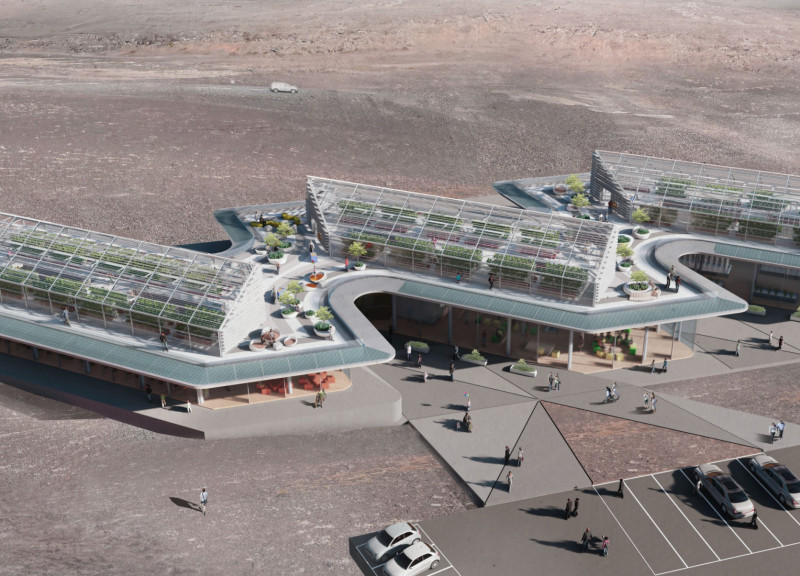5 key facts about this project
The Green Oasis project is located near Mývatn in Iceland, a region known for its geothermal activity and its appeal to tourists. The main goal is to create a self-sustaining environment that uses the challenging climate to support the growth of plants. By designing an oasis-like space, the aim is to promote agricultural productivity alongside a deeper connection between people and nature.
Design Approach
The layout consists of three greenhouses arranged to make the most of sunlight while reducing the impact of strong winds. Each greenhouse is designed to create its own micro-climate, which helps grow a variety of herbs, fruits, and vegetables. This arrangement not only increases the efficiency of food production but also enhances the site's visual identity. The shadows cast by the structures help to define outdoor spaces, inviting exploration.
Focus on Sustainability
Sustainability is a key aspect, with the use of a hydroculture farming system that minimizes water waste and energy consumption. This system fits well with Iceland's commitment to renewable resources. Geothermal heating, drawn from the area’s natural elements, ensures optimal conditions for plant growth. In addition, solar panels are included to harness sunlight and support the project’s energy needs.
Material Choices
The greenhouses feature glass panels that allow natural light to reach the plants effectively. The exterior is outfitted with photovoltaic aluminum RHS to create a stable structure while collecting solar energy. Inside, 4 mm sheet steel adds strength against the area's tough climate. The floors are made of 25 mm larch tongued and grooved boards, designed for temperature control and moisture management.
The integration of functional farming areas and shared spaces encourages visitors to engage with their surroundings. The reflections of the greenhouses can be seen in the landscape, while the vibrant plant life being cultivated adds color and life. This design emphasizes the importance of connecting architecture with the natural world.






















































